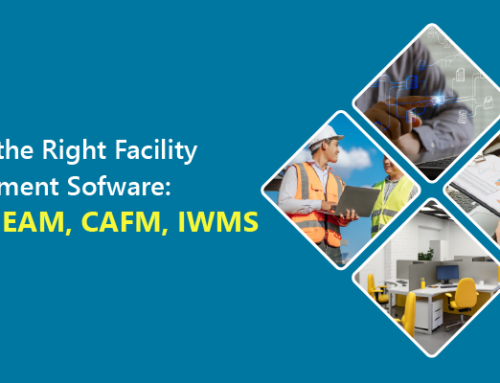Did you know that an average employee spends 90,000 hours at the workplace over a lifetime, (Gettysburg College study)? Today, most workplaces have cafeterias providing subsidized food to employees at least one meal a day, while in factories and schools two meals per shift are the norm. This is not only for the convenience of saving time for the employees, but also to provide them with wholesome, nutritious food to safeguard their health and wellness.
On top of that, organizations are also keen to develop and promote healthy workplace policies that endorse healthy lifestyles and eating habits to ensure their employees are fit and healthy.
Another effective way is educating employees on adopting a healthier lifestyle, so organizations are now using smart mobile applications to help their employees become aware of their calorie intake, the nutritional value of each food item, and allergen information that prompts them on the presence of allergens in the food items while booking or ordering a meal.
They also learn about the importance of getting adequate sleep, the benefits of daily exercising/yoga, sharing critical information on various diseases and ways to prevent them, etc.
Studies conducted by several food administration authorities across the globe indicate that employees display increased engagement in companies with good health and wellness programs. Such programs play an integral role in fostering workplace health and wellness. It may also be a big draw for a pool of talented people who prefer a healthy and productive work life.
Importance of a Healthy Lifestyle
In today’s fast-paced world, a healthy lifestyle is essential, and one way to achieve it is by maintaining a balanced diet, which means taking all the essential nutrients required for the proper functioning of your body.
So, it is imperative to eat nutritious food to stay healthy. A Harvard article suggests you create your own healthy, balanced meals, based on which you can infer that a balanced meal plan can help attain the ideal body weight and reduce the risk of chronic diseases like diabetes, cancer, and obesity.
A recent study by the British Journal of Health Psychology shows that healthy foods do more than give us energy; they make us happier, more engaged, and more creative. It is because fruits and vegetables contain nutrients that trigger dopamine production, which is crucial in kindling curiosity, motivation, and engagement.
Now let’s take a look at how organizations are planning to promote health and wellness through their cafeterias as recommended in WELL and Fitwel Standards.
How Can Cafeterias Encourage Healthy Eating?
One of the first steps to kick-starting any kind of health and wellness program is prevailing upon your employees to develop and maintain healthy eating habits. So, providing a wholesome food experience to employees through subsidized, well-organized cafeterias at the workplace can be a quick action plan that makes perfect sense.
Today, organizations have realized that a nutritious diet is crucial to the health and wellness of employees. Therefore, they stock their cafeterias with healthy breakfast/lunch options, nourishments, healthy (oil-free) snacks, etc., encouraging their employees to make healthy food choices.
Some of the typical techniques organizations deploy in their cafeterias to encourage employees to go healthy are:
- Encourage the consumption of whole, natural foods and the consumption of drinking water through a wall or digital posters
- Make consumers aware of what and how they can eat, making them more health conscious and helping them to develop healthy habits that will improve their nutritional intake by setting up digital signage that displays calorific, nutrient, and allergen data
- Educate employees on general health & wellness, and problems associated with health that covers the mind, body, and lifestyle. Providing employees access to articles, and blogs on yoga, fitness, healthy food, etc. can help achieve this goal
You are what you eat
Most of us have developed different eating habits, some are good, and some are not. And when we become conscious of what we’re eating and how healthy it is, healthy eating practices will become second nature.
According to WELL rating system guidelines, a workplace cafeteria should:
- Label and display a list of primary ingredients (per meal) and common food allergens at point-of-decision on menus or signage at the cafeteria
- Offer food in a reduced-size or half-size portion for all employees, at a lower cost
- Provide meals made free from egg, peanut, gluten, lactose, or dairy products upon early request from the employees
- Label foods like vegan, egg-free, meat-free, and free from possible allergens like peanut, gluten, lactose, or dairy products allowing the occupants to make the choices based on their diet requirements
- Restrict the use of artificial ingredients and additives in foods & beverages provided within the campus. Indicate the same in nearby menus and signage that the foods and beverages contain no artificial sweeteners, colourings, or preservatives in compliance with the WELL standard and must strictly instruct the Chef regarding the same
Calorie Tracking
We can’t escape the fact that we’re a health-conscious, terribly busy generation more concerned about how many calories we consume daily.
But manually tracking calories is challenging and requires diligent following, which can be done easily by using a software tool or an app to record the calories of ordered meals.
Allergens, Alternatives, and Ingredient Labelling
For people with food allergies, even mild exposure can cause an allergic reaction, which could turn life-threatening. Hence, precautionary food allergen labelling is essential in workplace cafeterias.
eFACiLiTY® Occupant Health and Wellness app is an app that will calculate calories instantly from the nutritional information (Ingredient master data) provided by cafeteria management software for every meal served for a particular day and help in overcoming the need for manual tracking. The app helps occupants track their intake every day and also triggers automated alerts to encourage eating healthy foods. It also displays allergen information which can keep the employees safe from panic attacks.
Upgrading your Workplace Cafeterias with Automation
In a conventional workplace cafeteria, employees may lose up to 20 minutes of their productive time in a day during the lunch hour rush, which adds up to about 8 hours a month per person during an entire workday restlessly standing in line.
Besides this, cafeteria managers must manually manage multiple meal bookings, keep track of kitchen inventories, and food consumption, generate reports, etc., which may result in inaccuracies and is time-consuming.
Companies are upgrading their cafeterias using software solutions that align and comply with globally recognized international standards like WELL, Fitwel, etc. that ensures employees’ health and well-being.
eFACiLiTY®, the most comprehensive CAFM/IWMS solution, is one of the few software solutions that align with globally recognized international standards. It takes care of the Green Building Rating – LEED requirements that deal with food waste monitoring and concepts and features required for Occupant Wellness as per the WELL credentials and Fitwel Standards.
eFACiLiTY® Cafeteria Management Software helps managers to automate cafeteria operations, manage orders efficiently, track kitchen inventory, eliminate long queues at the counters, etc., enhancing the employee dining experience.
Meal Order Processing
Organizations should be able to manage consumer orders on time, and automation can help accelerate the dining process by roughly 5 to 10 minutes.
So, a cafeteria order management software like eFACiLiTY® consolidates all the meal requests from the point when an employee places an order through the web or mobile app. In organizations providing subsidized meals, the menu is published by the chef in advance using software.
Meals can be pre-booked to be kept ready for consumption. Before picking up the order, employees can record meal consumption through Barcode/QR Code/Access Card/NFC scanning installed on the kitchen walls. Ad-hoc requests from meeting rooms and other managers also appear in the chef kiosks.
The kiosk devices can be configured to facilitate the seamless management of orders, viewing pending orders, updating meal item availability and status of ordered meals, etc. by the chef or cafeteria manager.
Inventory Management
One of the key components in managing corporate cafeterias is inventory control. By knowing what kitchen supplies are in stock, chefs can plan menus, and make menu item changes if required. So, automating this process will help improve profitability.
A cafeteria management system like eFACiLiTY® has an inbuilt inventory management module to track the real-time availability of menu items, manage kitchen inventory with the bill of materials (BOM), track costs, etc. Furthermore, it can be utilized to determine the food quantity and avoid any food shortages or wastage.
With eFACiLiTY® chefs receive on-screen alerts for kitchen items reaching their minimum order quantity through integration with the kitchen-installed kiosk or touch panels. They can easily create purchase orders for the procurement team at the touch of a button.
Billing and Payment
In large cafeterias, service and payment are areas where mistakes can occur due to the inefficiency of manual activities which also makes it time-consuming. So, it is important to automate and make these processes as easy as possible.
With a cashless canteen management system, employees can get the orders billed quickly and make payments instantly with prepaid wallets, credit/debit cards, etc.
In cafeterias providing subsidized food, employees record their meal intake, and via integration with payroll software, data will be captured or shared for automatic deduction of costs.
Reports and Insights
While it is essential to offer healthy food and a delightful employee experience, organizations must analyze and work on their strengths constantly and that’s where the role of reporting and analytics plays a major role.
An automated cafeteria software like eFACiLiTY® is well-equipped with smart analytics that provides detailed reports and insights about your cafeteria. It can record the total number of orders received and cancelled along with both item-wise and category-wise reports that can provide a detailed insight into the most preferred meal items.
Cafeteria managers can also generate real-time reports on consumer feedback and use them to analyze the cafeteria’s performance to identify and rectify future shortcomings.
Compliance with International Standards
Not only should food be safe but of high quality, so it is essential to ensure that the best practices are implemented right from preparation until consumption. Organizations can achieve this by adhering to food safety regulations and complying with international standards, which provides them with a competitive advantage over their rivals.
Compliance refers to operating within accepted standards that aim at maintaining quality. So be it cafeterias in corporate offices, colleges/universities, hospitals, multi-tenanted facilities, food courts, etc., they must comply with international standards to improve transparency and enhance team accountability.
Compliance with WELL and Fitwel Standards
Health & Wellness App
A perfect workplace needs to be comfortable and engage employees; beyond that, it should ensure maximum productivity. Recent Harvard research studies have proved that organizations have witnessed a fall in medical costs and absenteeism costs after investing in employee wellness programs.
Some organizations have put in a lot of time and effort to create an app for corporate wellness. And SIERRA’s eFACiLiTY® Occupant Health & Well-being App is one of the leading apps catering to human health and wellness standards as specified in the WELL Building Standard™, a global rating system constituted by The International WELL Building Institute™ (IWBI™) and also the Fitwel standard created by The Center for Active Design (CfAD) in partnership with the U.S. Center for Disease Control and Prevention (CDC) and the General Services Administration (GSA). The application helps monitor physical activity, nutrition, and environmental parameters, promoting a healthier lifestyle. Besides meeting the WELL & Fitwel standards, eFACiLiTY® also complies with Green Building Rating – LEED requirements.
Sustainable Food at the Workplace – LEED Standards for Green Buildings
An upgraded cafeteria software like eFACiLiTY® helps meet the Green Building requirements like LEED and IGBC. It helps immensely in waste reduction and resource conservation.
- The daily meal booking by occupants leads to accurate order tracking
- Integration with the time & attendance system provides the exact occupant count for every meal session
- Precise ingredients BOM allows excellent inventory control
- The live monitoring of the consumption and the available food quantity reduces the wastage due to buffering
- Daily waste monitoring helps in planning and controlling the food wastage
What’s Next
We hope this blog highlights how eFACiLiTY® can help you deliver the best dining experience and ensure the health and welfare of your employees at your cafeterias. You’ve come to the right place if you want to upgrade your traditional cafeteria.
Schedule a demo with us today to better understand your needs and stay on top of your entire cafeteria operations.



















